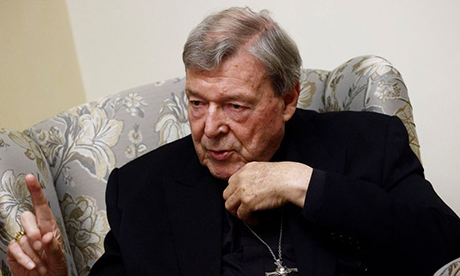The Vatican needs clear rules to govern the status of popes who resign in the future, according to Cardinal George Pell, a leading Roman Catholic conservative.
Pell is one of the highest-ranking Church figures to speak publicly on the need for these new rules.
The situation became an issue in 2013 when Pope Benedict, 93, became the first pontiff in 700 years to abdicate.
Church law says a pope can resign, as long as he does so willingly and not under pressure. Still, specific rules on his status, title, and prerogatives are lacking.
“The protocols on the situation of a pope who has resigned need to be clarified, to strengthen the forces for unity,” Pell, 79, writes in his book, “Prison Journal”.
The book recounts 13 months Pell spent in solitary confinement.
Pell, who has always maintained his innocence, was cleared of sex abuse charges in April and has returned to Rome. He was Vatican treasurer until 2018.
“While the retired pope could retain the title of ‘pope emeritus’, he should be re-nominated to the College of Cardinals so that he is known as ‘Cardinal X, Pope Emeritus’. He should not wear the white papal soutane (cassock) and should not teach publicly,” Pell writes.
In the book, Pell comments, “probably the measures would be best introduced by a pope who had no surviving predecessor”. That means that in the present Vatican situation, Francis would have to wait until after Benedict dies.
Days before Benedict abdicated in 2013, he scripted his own rules. He invested himself with the title pope emeritus, deciding to continue to wear white and to live in the Vatican.
But his presence has caused some confusion among the faithful. Some extreme right-wing conservatives still refuse to recognise Francis as pope.
Benedict has occasionally allowed his views on specific subjects to be aired outside the Vatican. This has pleased some fellow conservatives who have used them as ammunition to contest his successor Pope Francis’ more open-minded and inclusive papacy.
“There is only one pope,” Pell said in an interview with Reuters in his Rome apartment near a Vatican gate.
Others have suggested that since a pope is also the bishop of Rome, a former pontiff should be called ‘bishop emeritus of Rome’.
He would then be subject to the same written rules, last updated in 2004, that cover retired bishops.
Those rules say any bishop emeritus “will want to avoid every attitude and relationship that could even hint at some kind of parallel authority to that of the diocesan bishop, with damaging consequences for the pastoral life and unity of the diocesan community”.
